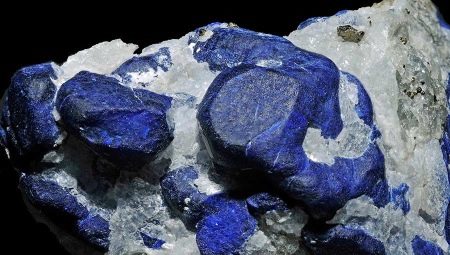The first association in the form of lapis lazuli is the vault of heaven. Depending on the color, it may look like a blue cloudless sky in bright sunny weather, a dark blue pre-thunderstorm or evening sky, strewn with stars created by golden pyrite impregnations.
In addition to a bright appearance, lapis lazuli is endowed with great energy potential - it is no coincidence that stone has long been used as amulets, and for the treatment of various diseases. From this article you will learn in detail about its healing and magical properties, about what minerals have for a person today, who suits them, where they are mined, and how they are used.
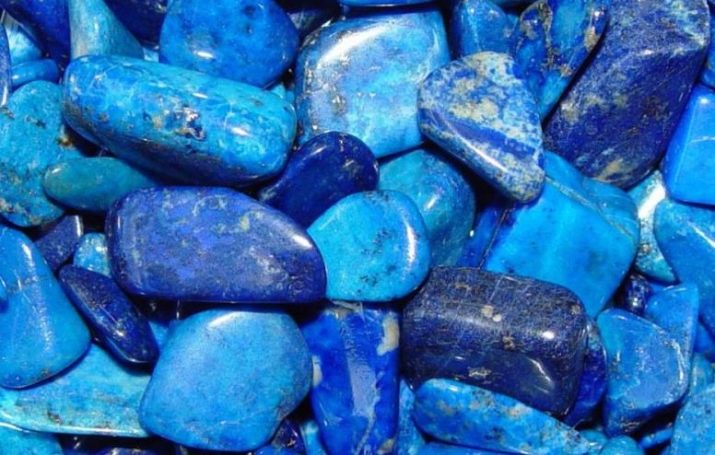
Description
The etymology of the word "lapis lazuli" dates back to the Arabic azur ("blue") or Persian "lazhvard" ("heavenly stone"). As you can see, their value is almost identical, and it indicates the color of the mineral, which can vary from sky blue to deep blue, and even indigo. Until the 18th century, it was called "lapis lazuli". However, today this word is used only in relation to the highest quality varieties of the mineral.
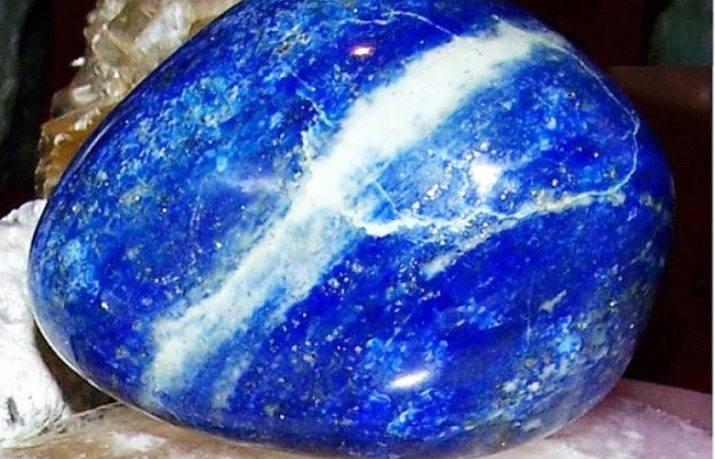
Lapis lazuli is considered a semiprecious stone with a low cost - the price per 1 gram does not exceed $ 5. Belongs to the class of silicate minerals. It consists of aluminum, sodium, silicon and oxygen.
But the main element that gives the stone a deep blue color is sulfur - the more it is in the composition of lapis lazuli, the more saturated and deep its shade will be.
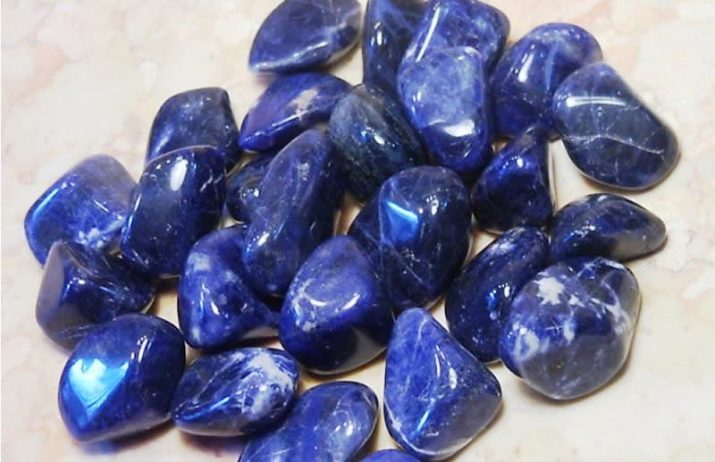
In addition to these basic elements, lapis lazuli can also include pyrite, calcite, feldspar, pyroxene and others. The first component even gives the mineral additional attractiveness - pyrite inserts look like golden threads, but they should be no more than 15%. But the rest of the impurities reduce the value and market value of lapis lazuli, which means they make it unsuitable for creating jewelry.
Minerals containing a large amount of calcite and feldspar are mainly used for the manufacture of various crafts and decor of internal and external walls of buildings.
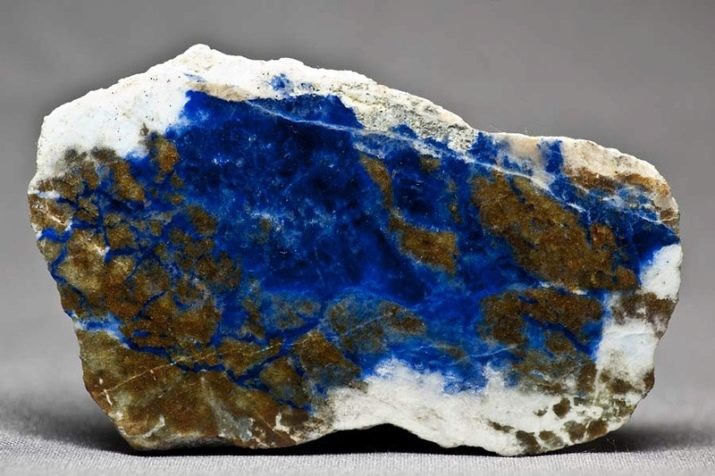
One of the basic physical characteristics of precious and semiprecious stones is hardness. According to this indicator, lapis lazuli is in the middle of a ten-point Mohs scale (5.5). The stone is quite fragile, it is easy to damage it.
But at the same time, it is easy to process and allows you to "sculpt" the most interesting jewelry and decorative items.
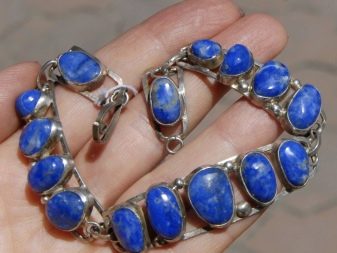
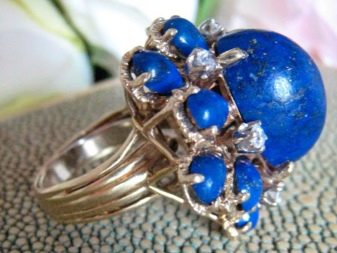
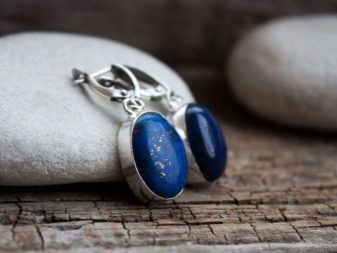
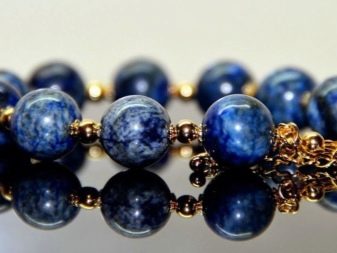
Another important parameter is transparency. Lazurite has it low. Relatively transparent include only the highest quality specimens. In the form of crystals, lapis lazuli practically does not occur in nature - as a rule, it is part of marble slabs, from which it is then extracted.
Application
The use of lapis lazuli is not limited to the jewelry sphere. Yes, jewelry is made of the highest quality stones. Most often, this jewelry, since the use of precious metals is not justified by a combination with cheap heavenly mineral, even the most elite varieties. Although lapis lazuli in silver and even a gold frame in jewelry stores can be found.
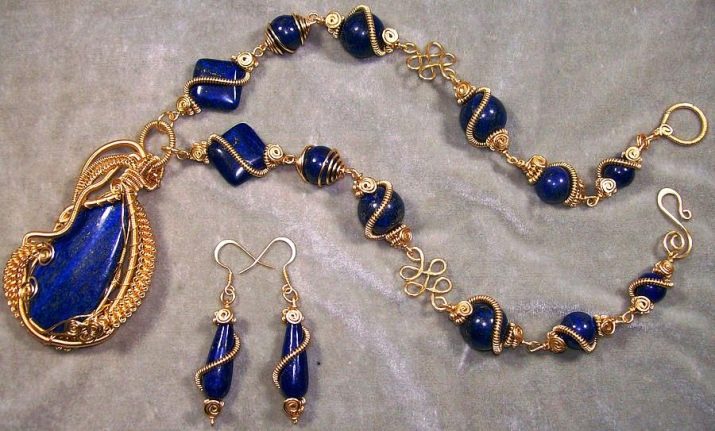
Since lapis lazuli is an inexpensive stone, and jewelry with it is usually used as amulets, the cabochon cut type is used, as a result of which the mineral gets a smooth convex shape without edges. This processing method allows emphasizing the unusual color of the stone, and the absence of faces is explained by the insufficient brilliance and light refraction of the celestial mineral.
Lapis lazuli is also actively used as ornamental material. Various art objects are made from it: caskets, souvenirs, vases, figurines and other decorative and applied products. The most low-value varieties are used for interior decoration and cladding of building facades.
As such, lapis lazuli can become an original decorative element of your home.
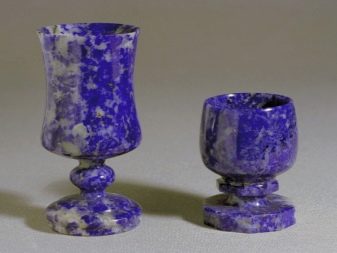
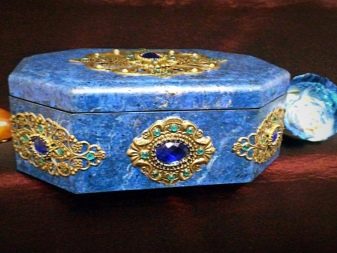
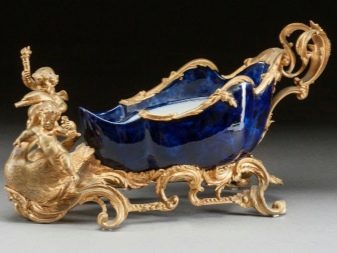
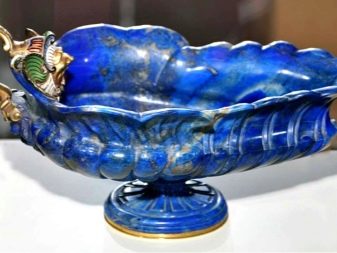
Origin history
The history of lapis lazuli dates back 7 thousand years. Badakhshan mines in Afghanistan became the first source of mineral extraction. Another oldest deposit of lapis lazuli was in Iran. Lapis lazuli was already delivered from these countries to Egypt, Greece, Rome, and the states of Asia and Europe.

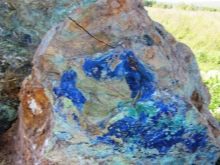
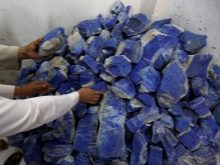
The mineral was in great demand as a jewelry and semi-precious stone, as well as a decorative material for facing columns, fireplaces, walls of palaces and temples. In those days, lapis lazuli was a very rare mineral with a complex method of extraction, so it was very expensive.
The stone was also highly valued in Egypt. He personified the god Amon-Ra, so the priests dyed their clothes with powder made from lapis lazuli. The stone also symbolized the power of the pharaoh - God on earth. The palaces of the Egyptian rulers were trimmed with this mineral. Lapis lazuli figurines were also found in the tombs of the pharaohs, the entrance to which was guarded by scarab beetles, also made of heavenly stone. Even on the robes of Egyptian judges, a lazurite figurine of the goddess of truth flaunts. Lazurite was given great importance in China - it was part of the headdress of the emperor.
Azure stone acted simultaneously as a protective talisman and as a symbol of the monarchy of power. They also adorned the walls of palaces and temples.
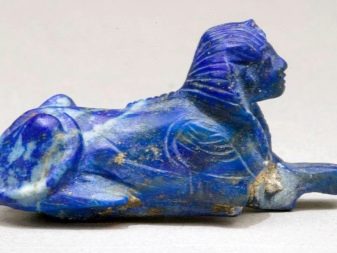

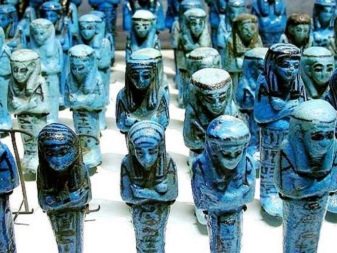
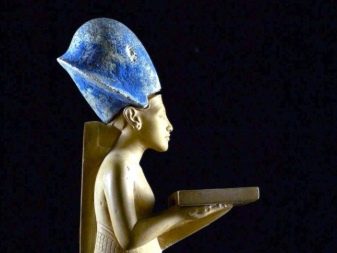
But this was not limited to the use of lapis lazuli. Lapis lazuli powder was used in medicine - antiemetic drugs were made from it.From ancient times, lapis lazuli also served as a raw material for the production of ultramarine color paint, which was actively used by artists all over the world until the 19th century, until its artificial counterpart appeared. During the Renaissance, lapis lazuli was incredibly popular. Jewelry, magic amulets, various objects of art were made from it, and it was also actively used for decorating walls and ceilings of architectural structures.
In Russia, the mineral appeared and began to be actively used since the reign of Ivan the Terrible. First, it was imported from Afghanistan and Iran. But in the era of Catherine the Great, its own deposits of lazurite mineral were discovered - they were in the area near Lake Baikal. The decor of such architectural masterpieces as St. Isaac’s Cathedral,
The Winter Palace in Peterhof and the Catherine Palace in Tsarskoye Selo actively used lapis lazuli.
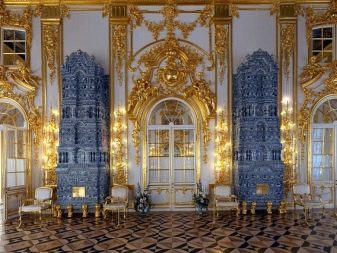
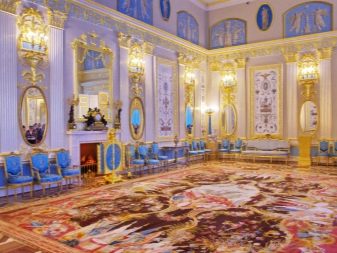
Place of Birth
The most beautiful and expensive lapis lazuli is mined in Afghanistan in the northeastern province of Badakhshan (Badakhshan field). It is either of a uniform deep blue color, or with streaks of pyrite - sulfur pyrite, which in appearance resembles gold threads that cross the mineral along and across. The Russian stone obtained from deposits in the southern Baikal region, on the banks of the Slyudyanka River, is just as highly valued.
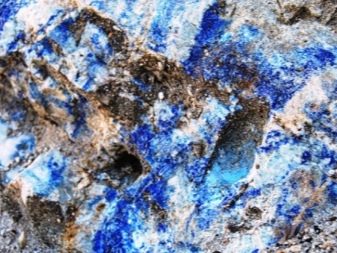
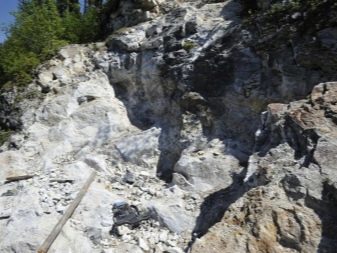
Lapis lazuli mined in the Andes, Chile, is also considered high-quality. There are also deposits of lapis lazuli, although less significant and large, in Tajikistan and China (Pamir mountains), in the USA (California), in India, Africa and Argentina.
Varieties
The color palette of lapis lazuli is very wide: the color of the stone can be pale blue, turquoise, deep blue and violet, even a greenish tint can be present. The most expensive specimens are distinguished by a deep blue-violet color, a homogeneous texture and have no pattern at all. Minerals with pyrite yellow accents are recognized as equivalent - they look very impressive and give lapis lazuli additional nobility and luxury.
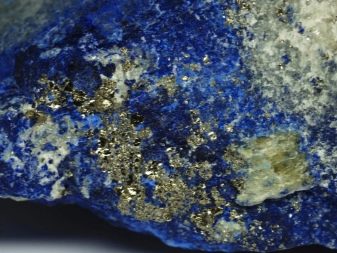
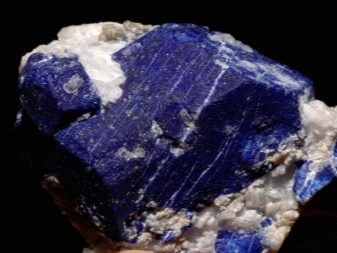
Lapis lazuli by color is usually divided into three groups.
- Niili. These are the highest quality stones. Their color is dark blue, sometimes turning into indigo. They either have no ornament or a golden pyrite pattern is allowed, but not more than 15%. It is in this category that Afghan lapis lazuli is considered, which is recognized to date as the best.
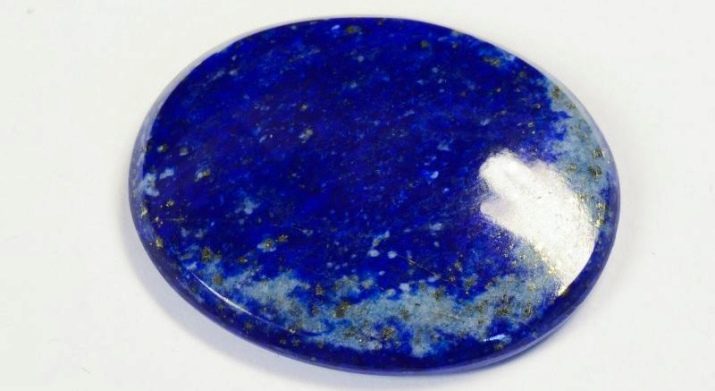
- Asmani. The stones of this intermediate group have a gentle, sky blue color. They are valued less than Niil, but more than Sufi.
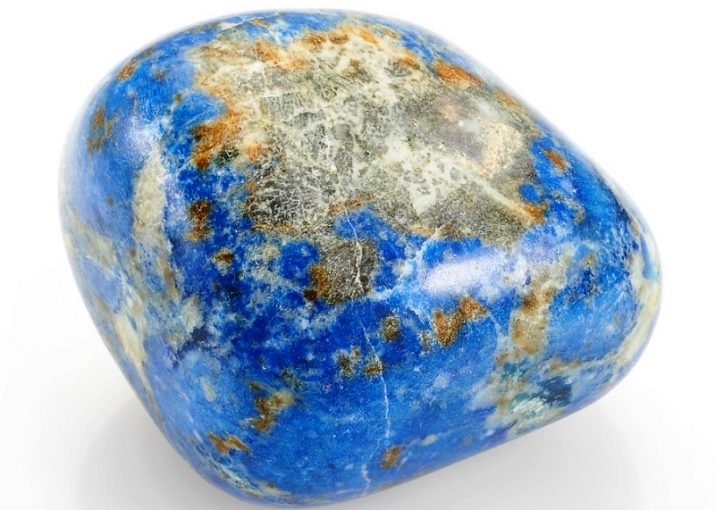
- Sufsi. This is the lowest quality lapis lazuli, as it has a green tint. Sufs are completely unsuitable for jewelry purposes - such stones are mainly used as elements of wall decor.
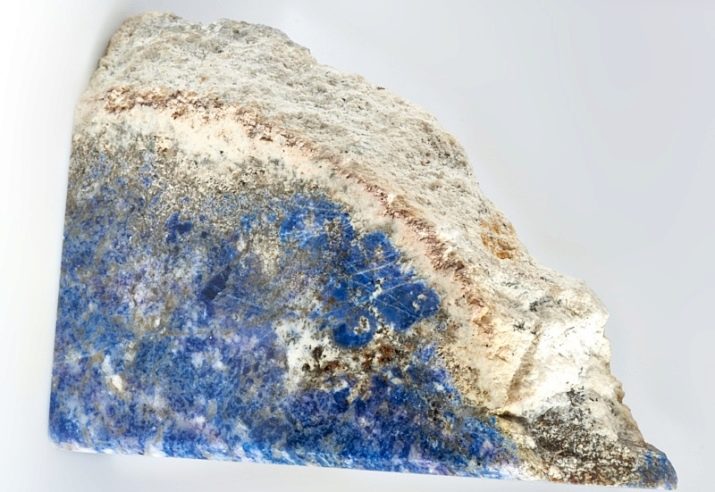
The following classification is based on the criterion of homogeneity. According to this parameter, minerals are also divided into three types.
- Homogeneous. Such minerals are the most expensive. They are blue-violet in color, have no stripes or spots, and therefore are used to produce jewelry. In them there are practically no extraneous impurities. Only minor pyrite streaks are permissible.
The stones of this group even have some transparency, but this can be seen only if the thickness of the mineral does not exceed 3 mm.

- Spotted with small veins. Impurities of carbonate, feldspar, apatite and other elements form stains and stains on the stone, violating the uniformity of its structure. Such minerals are used to create amulets and manufacture decorative and applied products.
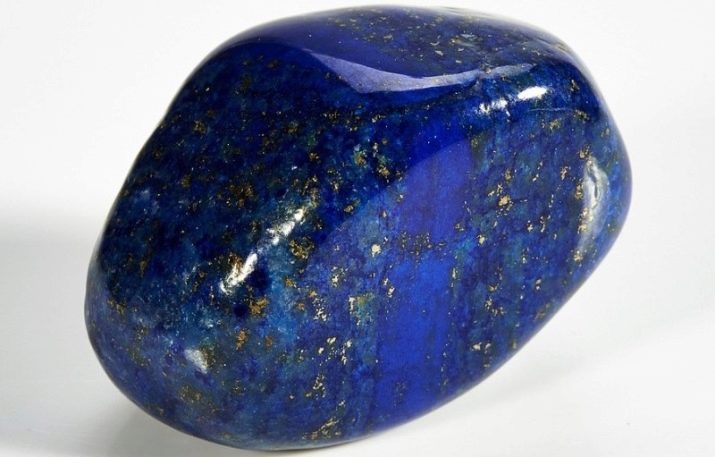
- Spotted with stripes. Due to the presence of a large number of foreign impurities in their composition, such minerals are abundantly “painted” with light stripes and various patterns. For jewelry purposes, they are absolutely unsuitable - the stones of this group are used mainly for interior decoration.
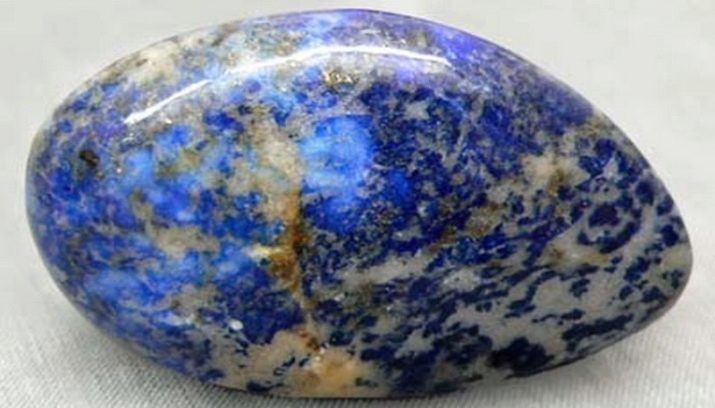
The properties
Although lapis lazuli does not have high jewelry value, it possesses valuable magical and healing properties.
Magical
Lapis lazuli has a very bright and positive energy, which has a beneficial effect both on the carrier of the stone, and on the people around it. Therefore, the celestial mineral is so popular among true magicians and healers who, with its help, heal the soul and body of a person.
Even in ancient Egypt, lapis lazuli was an attribute of priests, as it was considered a conductor of divine will.
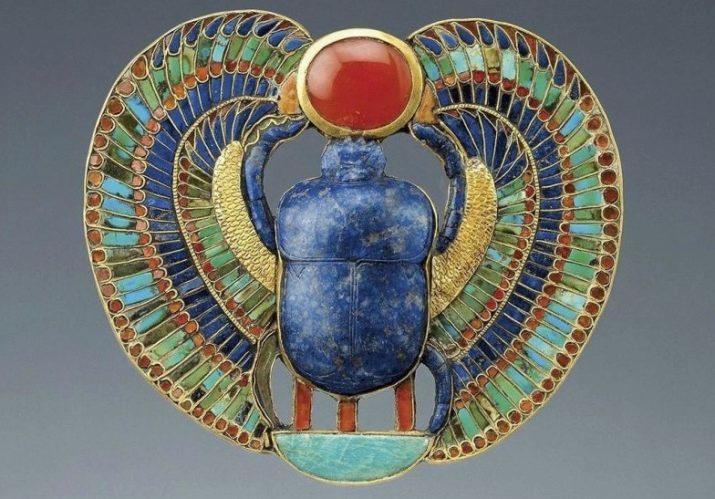
Among other properties.
- The stone cleanses the mind of vicious, destructive and negative thoughts, and the soul - of envy, hatred, irritation and anger. A person gets rid of heavy memories and excessive self-criticism.
- It tunes the one who wears it to higher vibrations, fills it with clean and bright thoughts that provoke a person to do good deeds.
- Creates an invisible protective barrier between his master and people who wish him harm. Protects its owner from negative influence from the outside, redirecting negative energy to the one from whom it emanated.
- Restores peace of mind, relieves from anxious thoughts and makes its owner more calm and cold-blooded, effectively helps with panic attacks and depression. However, there is a flip side to this property - the thought process and the speed of reaction slow down. Therefore, it is undesirable to carry a stone to doctors, firefighters, drivers of all vehicles, air traffic controllers and representatives of other professions who need to make quick decisions.
- It is believed that lapis lazuli attracts luck, prosperity and prosperity to the life of its owner, helps to reach new career heights and realize oneself in the chosen profession. The greatest energy power is the raw mineral, which is better to keep on your desktop or at home.
- It is useful for women to wear lapis lazuli earrings if they want to attract love and happiness into their lives, and at the same time protect themselves from envy, evil eye, corruption and gossip.
- Stone stimulates change. If a person wants to, but is afraid to change something, to part with the past in order to make room for the new, then lapis lazuli gives him self-confidence and determination that will help him to jump into the unknown. It can concern absolutely any sphere: change of work, type of activity or place of residence, changes in personal life.

Medical
Lapis lazuli is useful in many ailments.
- In ancient times, powder from lapis lazuli served as a means for removing toxic substances from the body. He helped restore the stomach after poisoning and stopped vomiting. Also played the role of an anthelmintic drug.
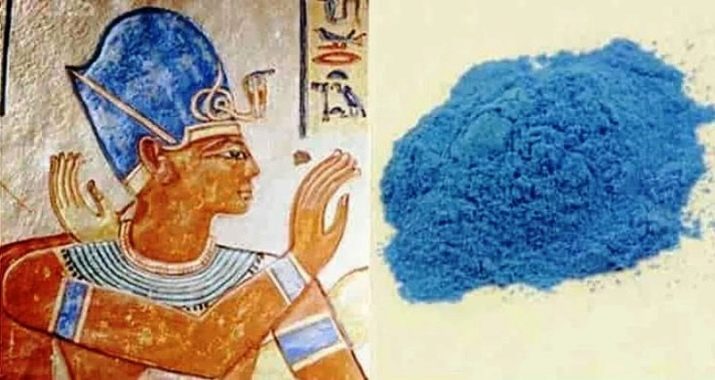
- In the Middle Ages, it was believed that products made of lapis lazuli help those who suffer from a lack of weight to gain the missing pounds and overcome physical exhaustion.
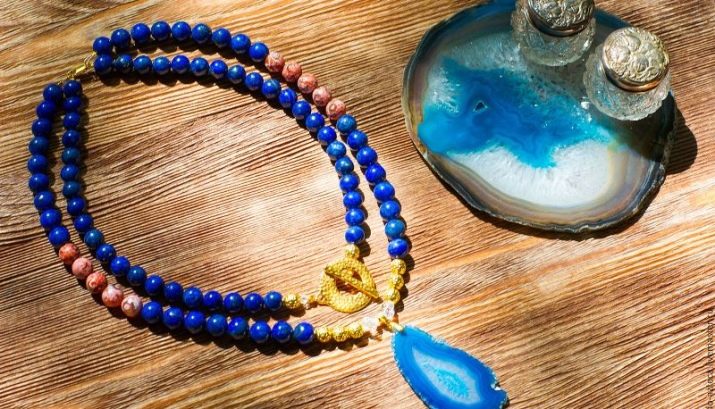
- Lapis lazuli necklace or pendant is recommended for women who are expecting a baby. Under the protection of the stone, pregnancy will proceed favorably, the expectant mother will avoid toxicosis and give birth to a healthy baby.
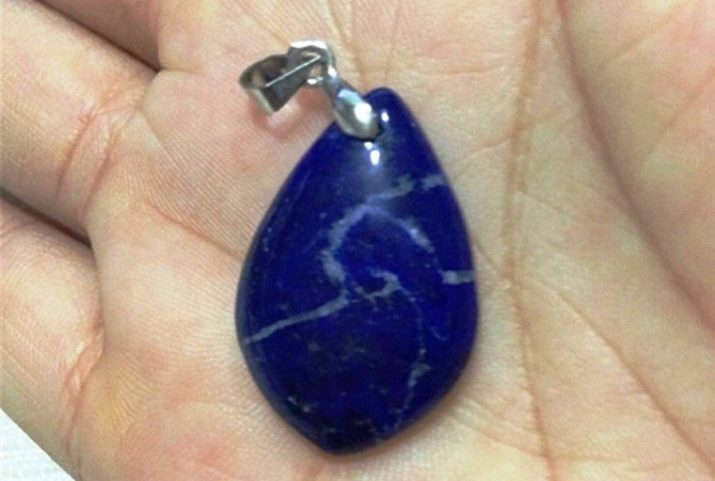
- The stone has a beneficial effect on the female genital organs, preventing and reducing the inflammatory processes in them.

- It is believed that the contemplation of lapis lazuli helps to improve vision. If you want to increase its severity, then look at the stone 5-6 times a day for 7-10 minutes. And after working with a computer, a blue crystal effectively relieves stress from tired eyes.

- Helps people with breathing problems. Reduces allergy, reduces the intensity and frequency of asthma attacks. Effectively relieves dry cough.

- It has beneficial effects on the circulatory and lymphatic systems, helps to speed up the healing of wounds and reduce pain, especially if you apply a stone to a sore spot. Cleanses the blood from toxins and toxins, lowers cholesterol.

- Beads with lapis lazuli relieve skin diseases: teenage acne and various rashes on the face and body.
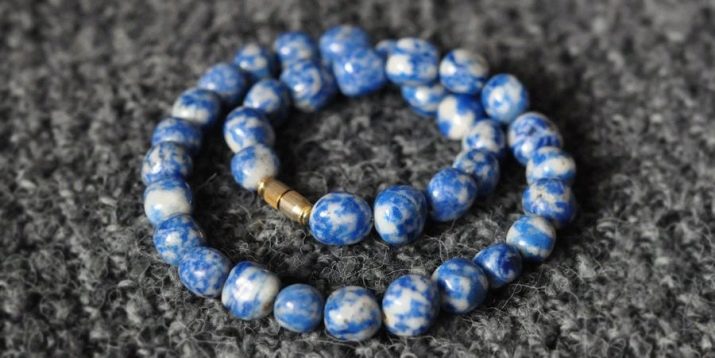
- Improves the mental state and strengthens the nervous system. Helps with neurosis and depression, reduces stress, normalizes sleep. It is recommended to use a stone during meditation - this way you can achieve a relaxed state faster.

- Those wishing to have thick, long and beautiful hair should add lapis lazuli earrings to the arsenal of funds to achieve this. They will improve the condition of curls, reduce their fragility and loss.
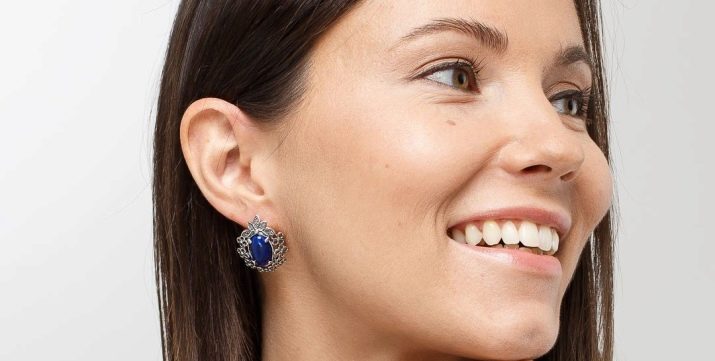
- It lowers blood pressure in hypertensive patients, and in hypotensive patients, on the contrary, raises it to the desired level, restoring vitality and a cheerful mood

- It ensures the normal functioning of the endocrine system and eliminates various hormonal disorders. Helps with thyroid disease.

- Increases the body's immunity, helps it fight viral and infectious diseases.

- Relieves a headache and prevents new migraine attacks.

- Promotes the rejuvenation of the whole organism, stimulating its renewal at the cellular level.

Who is it for?
Of all the zodiac signs, lapis lazuli is most suitable Pisces, Aquarius and Libra. It is also recommended to wear jewelry with a blue mineral of fiery and unrestrained Sagittarius and Aries - the stone will calm their temper temper, reduce the intensity of passions and emotions, make them more balanced.
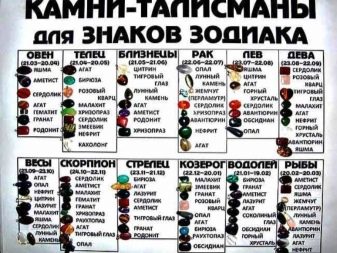
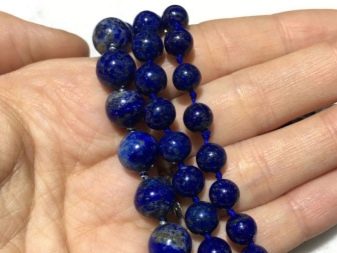
The absolute zodiacal incompatibility of lapis lazuli can be traced to Cancer and Capricorn. - The stone does not suit them at all, and can even attract representatives of these signs of trouble and trouble into life. Stone is also contraindicated for lions and Scorpions - it contradicts their bright personality and strong energy. Virgo and Gemini can wear a celestial mineral, but more as an aesthetic attribute - as a talisman, it will bring them neither harm nor benefit. It is better to opt for amulets with other stones.
Compatible with other stones
All minerals belong to one of the four elements: Earth, Water, Air and Fire.
Lapis lazuli is an earthly stone and goes well with its “classmates”, which also include jasper, chalcedony, agate, malachite, jade, turquoise and others. This is the most harmonious and ideal, from an energy point of view, neighborhood: minerals will complement and enhance the beneficial properties of each other.
It is recommended to combine lapis lazuli with water stones: emerald, aquamarine, topaz, pearls, chrysolite.
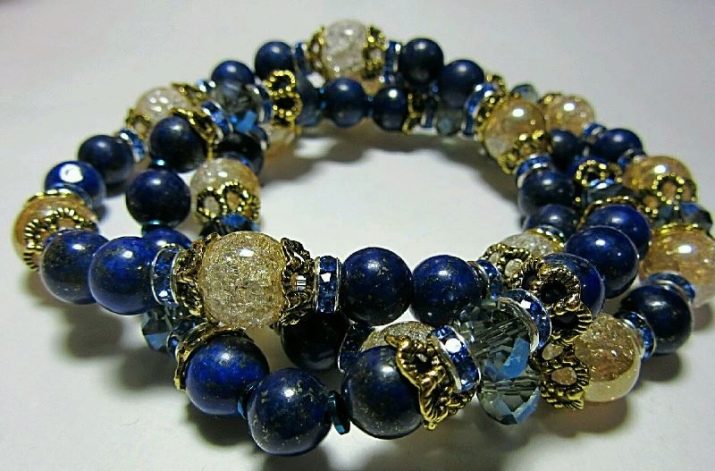
We tolerate lapis lazuli and air minerals. This group includes amethyst, transparent quartz, rock crystal, chrysoprase. However, the proximity to them is undesirable if you want to activate the magical properties of lapis lazuli - a stone, having such partners, will not work fully.
And finally, the last, fiery group, will only suppress earthly lapis lazuli with its energy, therefore such stones as amber, coral, pyrope, almandine should not be in the same energy space with the heavenly mineral. And a fiery diamond and ruby with their luxury and grandeur will simply “kill” calm lapis lazuli - both energetically and aesthetically.
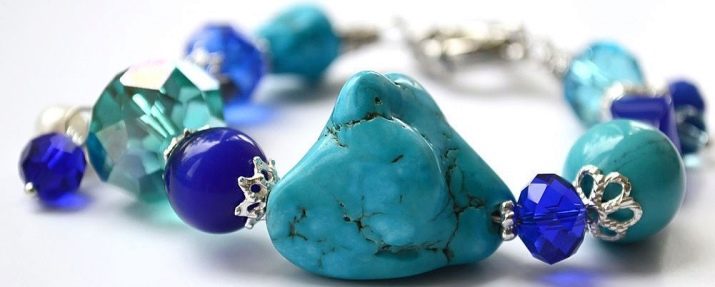
How to distinguish from a fake?
Despite the fact that lapis lazuli is an inexpensive semiprecious mineral, it is faked quite often, and there are many options for false analogs. They can be divided into three groups.
- Other materials: most often in lapis lazuli they “dress up” ordinary glass or polymer plastic, which is simply painted in the corresponding color. This fake is the cheapest, but it is also easiest to determine: the stone weighs more than the imitation material and also has low heat conductivity - no matter how much you hold it in your hands, it will not get warm, but will remain just as cold. Water will also help determine the fake - partially wash off the applied paint from it.
- Cheaper ornamental stones no less rarely play the role of their heavenly "brother." As such, jasper, sodalite, dumortierite, chalcedony, cacholong, azurite can act. To calculate a fake, you just need to immerse the stone in water. If it gets wet evenly, then you can not worry - you bought real lapis lazuli. But if on its surface you see an accumulation of small drops, then this indicates that the stone was painted and in front of you, most likely, a fake. Lapis lazuli has one more important property: it looks most brightly and effectively in sunlight, and in artificial light, on the contrary, it looks dull and inexpressive. This option will also help you distinguish it from other minerals.
- Cultured in laboratories, artificial lapis lazuli is also often given out for the creation of nature, and not human hands. This fake is the most difficult to recognize, sometimes fraudsters do not even skimp on adding tiny particles of gold to it to create the effect of pyrite streaks. But the pattern of natural lapis lazuli is more erratic and natural.
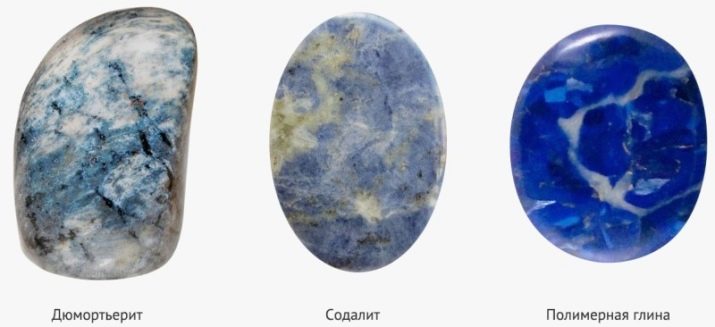
Another effective way to determine the authenticity of lapis lazuli is to throw it into the fire. A real stone is not afraid of this element - the flame is unable to damage it; from a very long exposure to high temperatures, the mineral will simply become darker. But hardly anyone would want to conduct such an experiment and risk buying a product.
If you want to dispel doubts about the authenticity of the stone in the safest and most guaranteed way, it is best to send it to the laboratory for verification. There they will tell you for sure whether you bought the real lapis lazuli or not.
The easiest way to protect yourself from fake is by purchasing a stone not from private traders or from an online store, but from a trusted jewelry company.
Care
Lapis lazuli does not require special care. But in order not to spoil the appearance of the stone, it is important to know a few points.
- It must be stored in individual packaging - preferably in a velvet or suede bag.
- Avoid “collisions” of the mineral with other stones and solid objects.
- Lazurite does not like long water procedures, so you should not go to the pool, bathtub or shower with it. However, water can be used to clean the stone, even ordinary tap water. But it is better if the dirt is not very strong, just wipe the mineral with a damp cloth or napkin, and then wipe it dry.
- It is acceptable to use cleaning chemicals, but not too aggressive and without hydrochloric acid - under its influence, lapis lazuli will lose its color and begin to decompose.
- The use of abrasive products is contraindicated - they can damage the surface of the mineral.
- Lapis lazuli can take sunbaths without restrictions - from this it will not fade. On the contrary, in the sun the mineral will look even brighter and more dazzling, recharged from the daylight by its positive energy.
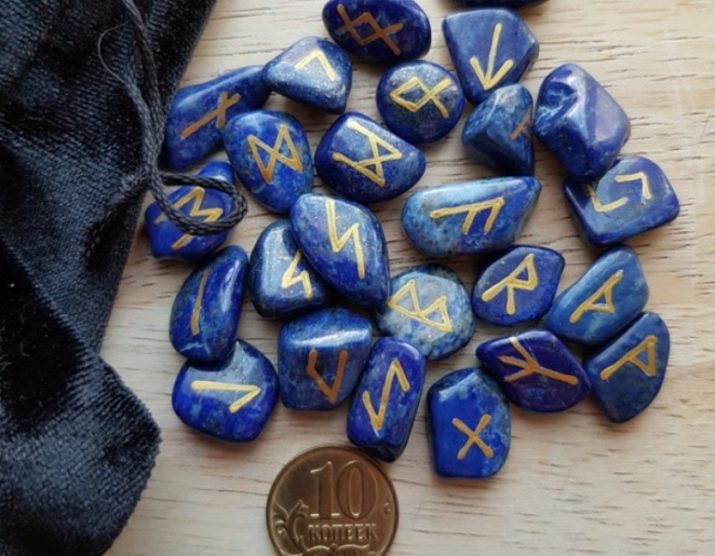
The low market value and insignificant jewelry value of the stone is offset by its most valuable properties. The heavenly mineral will give calmness, confidence and spiritual harmony to its owner, and can also become a wonderful decoration of his home.
For information on the properties and secrets of lapis lazuli, see the next video.
